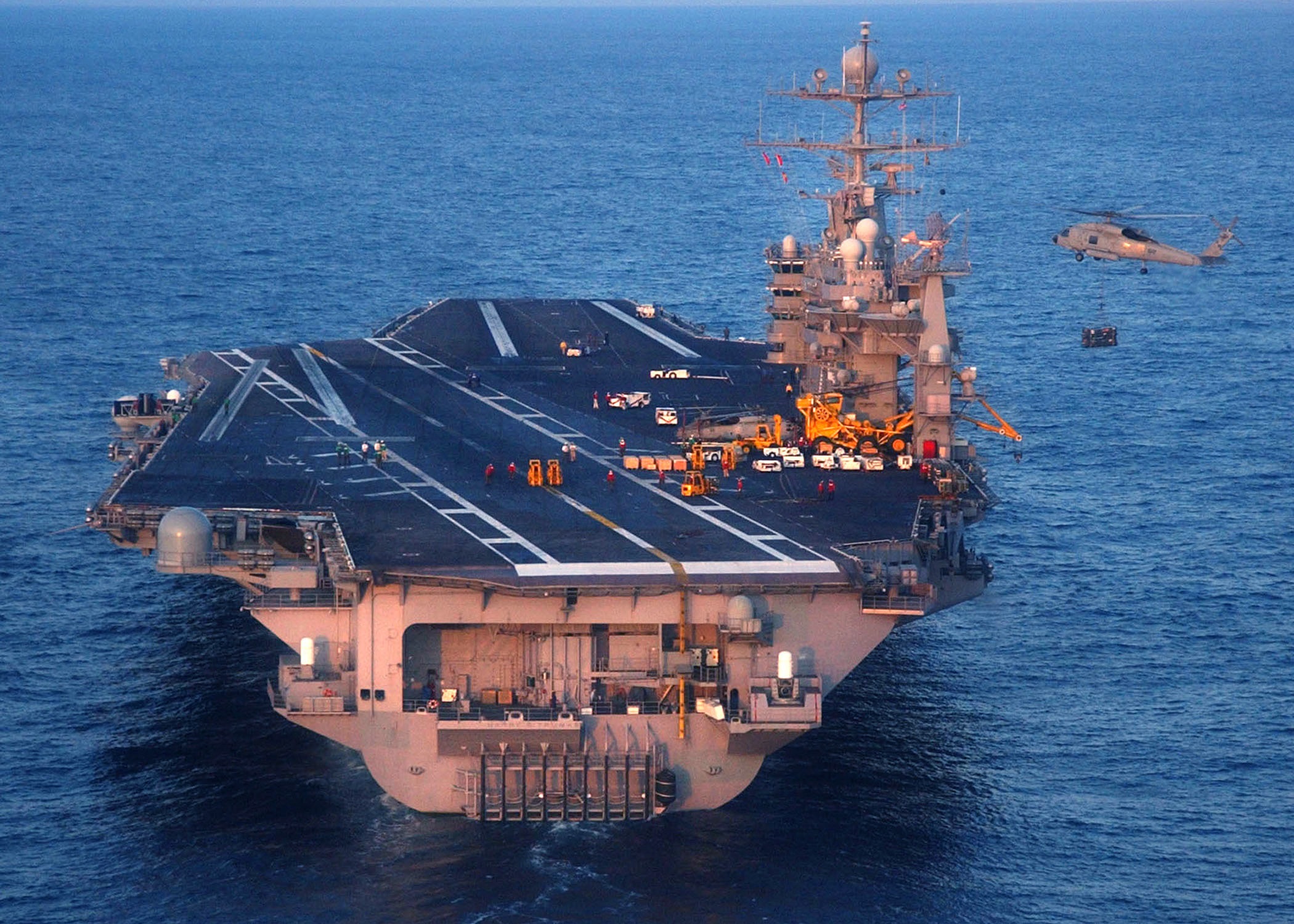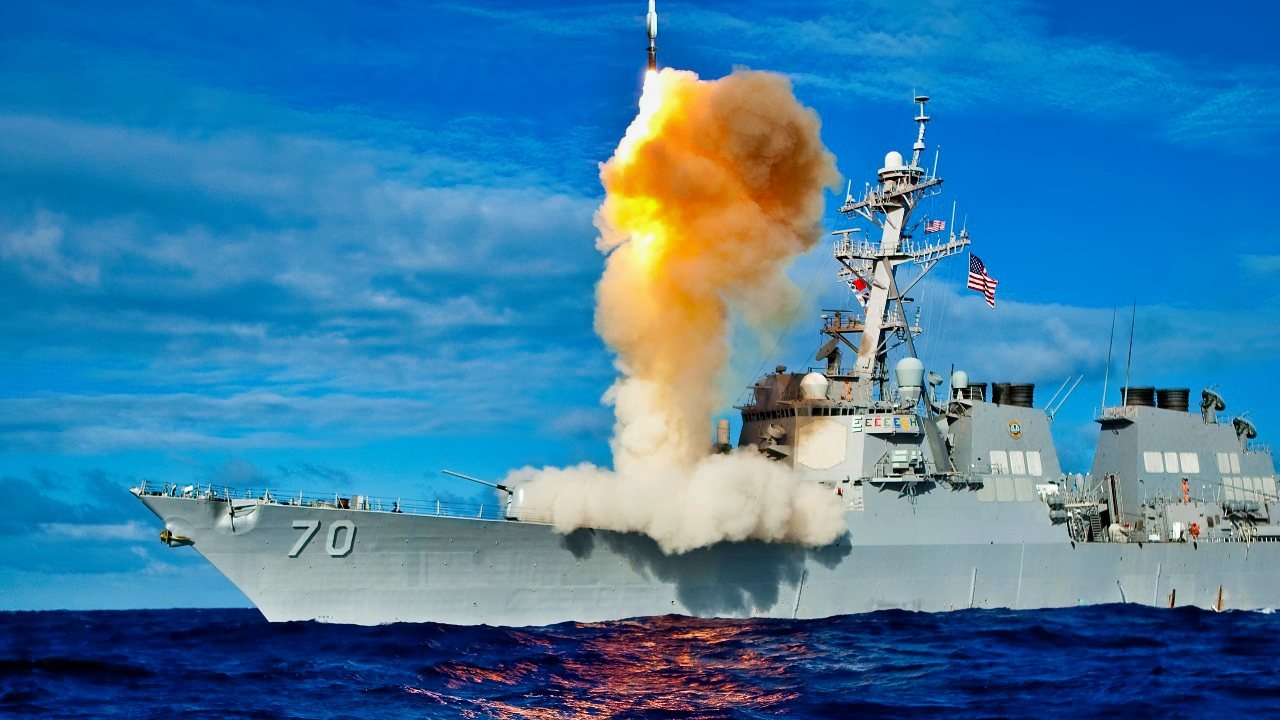China’s DF-21D Missile Was Built to 'Massacre' Navy Aircraft Carriers
China's DF-21D missile, designed to target and destroy U.S. carriers, poses an even greater threat. With a range of 900 miles and advanced guidance systems, the DF-21D can evade defenses and strike with high accuracy.
Summary and Key Points: The U.S. Navy’s reliance on aircraft carriers faces significant threats from modern anti-ship ballistic missiles and comprehensive anti-access/area-denial (A2/AD) capabilities, particularly from China. The Houthis in Yemen have demonstrated the vulnerability of carriers with their missile threats, highlighting the risks from non-state actors. China's DF-21D missile, designed to target and destroy U.S. carriers, poses an even greater threat. With a range of 900 miles and advanced guidance systems, the DF-21D can evade defenses and strike with high accuracy.

The growing Chinese missile arsenal and strategic capabilities put U.S. carriers at considerable risk in the Indo-Pacific.
China’s DF-21D “Carrier Killer” Missile is Poised to Massacre American Flat Tops
The U.S. Navy has long relied on its surface fleet, notably its aircraft carriers, to project power abroad. Indeed, since 1945, the dominance of America’s flattops went essentially unchallenged for decades. But those days are over.
The rise of anti-ship ballistic missiles and comprehensive anti-access/area-denial (A2/AD) capabilities make the deployment of America’s expensive aircraft carriers dangerous at best, and a fool’s run at worst.
Despite knowing of the growing irrelevance of America’s carrier force, to say nothing of the fact that little has been done to counter the growing A2/AD threat, Washington continues to blow through tax dollars building increasingly complex and large aircraft carriers.
The Houthi Anti-Ship Threat
Over the last eight months, the U.S. Navy has been dogged by anti-ship missiles belonging to Iran-backed Houthi rebels fighting in Yemen. Specifically, Dwight D. Eisenhower faced the prospect that an anti-ship missile launched by the Houthis might worm its way through Ike’s shipboard defenses and strike a blow.
And we’re talking about the Houthis, a non-state actor holed up in the deserts and mountains of Yemen. We are not describing a major power with a technologically potent, growing, modern military, such as the kind the People’s Republic of China can field.
If you are worried about the safety of your carriers when operating near arsenals controlled by non-state terrorist groups, just imagine the lethality of the systems built and launched by China.
China’s Threat is Greater
Enter the Dong-Feng 21-D (DF-21D), China’s premier anti-ship ballistic missile. A variant of the DF-21, which is a medium-range, road-mobile, solid-fuel ballistic missile, the DF-21D is specifically designed to target and destroy U.S. aircraft carriers and other large naval vessels. Married with an expansive, sophisticated, multi-layered sensor network, China’s DF-21D could be lethal against lumbering American carriers that need to arrive within their airwings’ targeting range of Chinese assets if a shooting war erupts between the two great powers.
The DF-21D has a range of approximately 1,450 kilometers (900 miles). It is capable of carrying a high-explosive warhead. DF-21Ds are equipped with a terminal guidance system that allows them to home in on the target, making it a highly accurate weapon. The missile is believed to have a maneuverable re-entry vehicle (MARV) that can evade enemy defenses.
China has never disclosed how many of these missiles they have. One can assume, however, given the premium that Chinese strategists have placed on being able to reliably threaten U.S. carriers and other surface warships, and considering China’s manufacturing capacity, that Beijing has these systems in abundance.
What’s more, China’s island-building program in the South China Sea, and its extensive road-mobile launch capabilities all along the Chinese coastline, add to the DF-21D’s mobility and versatility.
China Wants to Sink Three US Aircraft Carriers with the DF-21D
The DF-21D gives the U.S. Navy nightmares precisely because it has the potential to sink an aircraft carrier with a single hit. The missile’s long range allows it to be launched from Chinese territory, thus keeping the launch platforms out of harm’s way. (U.S. forces are unlikely to carry out direct strikes against the Chinese homeland.) The MARV capability makes it very difficult for the Navy to intercept this weapon before it lands a killing blow on a U.S. flattop.
Washington has allowed itself to be outclassed by the Chinese militarily in the Indo-Pacific. If a shooting war starts, America will very much be the underdog.

In fact, U.S. forces just might lose, unless radical changes are made to the way the U.S. military’s force is structured.
Author Experience and Expertise: Brandon J. Weichert
Brandon J. Weichert, a National Interest national security analyst, is a former Congressional staffer and geopolitical analyst who is a contributor at The Washington Times, the Asia Times, and The-Pipeline. He is the author of Winning Space: How America Remains a Superpower, Biohacked: China’s Race to Control Life, and The Shadow War: Iran’s Quest for Supremacy. His next book, A Disaster of Our Own Making: How the West Lost Ukraine, is due October 22 from Encounter Books. Weichert can be followed via Twitter @WeTheBrandon.
All images are Creative Commons or Shutterstock. Main image is from a fire aboard USS John F. Kennedy in 1968.
From the Vault
Russia Freaked Out: Why the U.S. Navy 'Unretired' the Iowa-Class Battleships
Battleship vs. Battlecruiser: Iowa-Class vs. Russia's Kirov-Class (Who Wins?)


